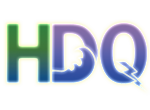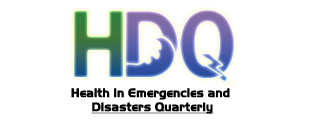دوره 11، شماره 2 - ( 10-1404 )
جلد 11 شماره 2 صفحات 114-103 |
برگشت به فهرست نسخه ها
Ethics code: (IR.MUI.NUREMA.REC.1400.184)
Download citation:
BibTeX | RIS | EndNote | Medlars | ProCite | Reference Manager | RefWorks
Send citation to:



BibTeX | RIS | EndNote | Medlars | ProCite | Reference Manager | RefWorks
Send citation to:
Panahi S, Heidari Z, Atighechian G, Heidarpour M, Ashrafi-Rizi H. Mapping Disaster Health Literacy for Chronic Patients: A Scoping Scientometric Analysis. Health in Emergencies and Disasters Quarterly 2026; 11 (2) :103-114
URL: http://hdq.uswr.ac.ir/article-1-685-fa.html
URL: http://hdq.uswr.ac.ir/article-1-685-fa.html
Mapping Disaster Health Literacy for Chronic Patients: A Scoping Scientometric Analysis. فصلنامه سلامت در حوادث و بلایا. 1404; 11 (2) :103-114
چکیده: (1075 مشاهده)
Background: Natural hazards pose threats and opportunities for enhancing health literacy among chronic patients. This study aimed to investigate temporal distribution patterns of health literacy literature in disasters, depict collaborations among researchers and leading countries, and provide insights for future research directions in this domain.
Materials and Methods: Mapping studies using bibliographic tools and an oriented scoping review were conducted. A search strategy utilizing synonymous terms for “disaster literacy and chronic diseases” was implemented on Scopus, Web of Science (WoS), and PubMed from inception to 2024, resulting in the retrieval of 1,885 articles. VOSviewer, UCINET, and NetDraw software performed analyses.
Results: The concept of disaster health literacy (DHL) has grown since 2019. Patients with diabetes, hypertension, respiratory diseases, asthma, cancer, those on dialysis, and stroke survivors faced the most challenges during disasters. Seven thematic clusters of studies were identified, encompassing research methods, types of literacy, vulnerable groups, chronic patients, study locations, disease management, and comorbidity types.
Conclusion: Improving DHL plays a pivotal role in empowering individuals with chronic conditions to navigate crises with greater resilience and informed decision-making. To mitigate adverse outcomes, it is essential that national emergency frameworks integrate targeted health literacy interventions tailored to the needs of vulnerable populations.
Materials and Methods: Mapping studies using bibliographic tools and an oriented scoping review were conducted. A search strategy utilizing synonymous terms for “disaster literacy and chronic diseases” was implemented on Scopus, Web of Science (WoS), and PubMed from inception to 2024, resulting in the retrieval of 1,885 articles. VOSviewer, UCINET, and NetDraw software performed analyses.
Results: The concept of disaster health literacy (DHL) has grown since 2019. Patients with diabetes, hypertension, respiratory diseases, asthma, cancer, those on dialysis, and stroke survivors faced the most challenges during disasters. Seven thematic clusters of studies were identified, encompassing research methods, types of literacy, vulnerable groups, chronic patients, study locations, disease management, and comorbidity types.
Conclusion: Improving DHL plays a pivotal role in empowering individuals with chronic conditions to navigate crises with greater resilience and informed decision-making. To mitigate adverse outcomes, it is essential that national emergency frameworks integrate targeted health literacy interventions tailored to the needs of vulnerable populations.
| بازنشر اطلاعات | |
 |
این مقاله تحت شرایط Creative Commons Attribution-NonCommercial 4.0 International License قابل بازنشر است. |





